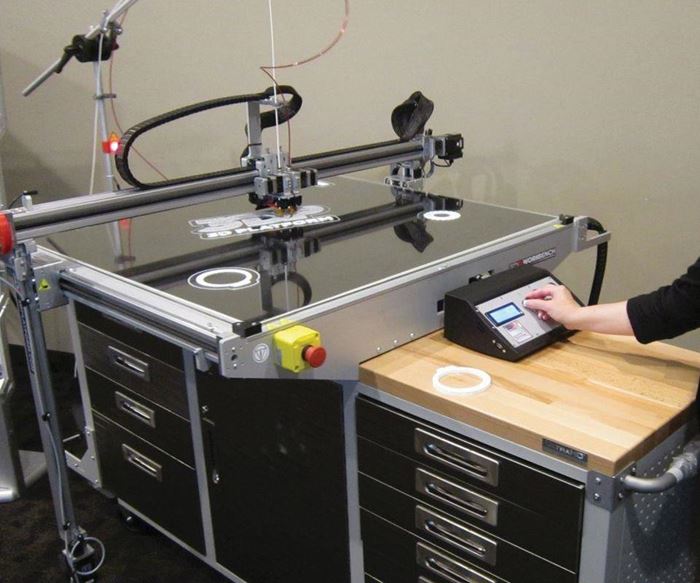Using Additive Manufacturing to 3D-Print Fixturing, Machine Tool Components
Machine shops can consider 3D printing technology a handy way to make custom fixturing and other components.
Share





A little while back, I visited 3D Platform (3DP), located in Roscoe, Illinois, to learn more about the company and its affordable Workbench line of open, large-format 3D printers. Born from PBC Linear, manufacturer of linear motion components actuators and motors, 3DP offer its Workbench 3D printer with a printing build volume of 1 × 1 × 0.5 meter. The machine’s SurePrint servo technology enables print layer resolution a low as 70 microns for a range of materials including ABS, Nylon and others. Plus, a folding gantry enables the machine to fit through a standard-sized door.
This machine can be used for a variety of applications for printing prototypes, production parts, artwork and sculptures, and personalized items commonly derived from 3D scans often used in the medical, fashion, education and entertainment industries. That said, machine shops can also use it to print jigs, fixtures and other components. In fact, 3DP has done that for its own in-house production needs.
For example, the company printed the profile rail wiper shown to the right for one of its machine tools. Although that machine has built-in rail surface wipers that push big steel chips off the rail surfaces, the wiper failed to catch smaller pieces that can be caught in between the rail and the ball bearing system, causing the ball bearing system to fail prematurely. The printed rail wiper added to the machine keeps small chips off the rail while helping retain oil and lubrication in the rail bearings.
In addition, 3DP printed a thread rolling machine die holder that stores the entire set of thread rolling instruments conveniently in one place, supporting the company’s 5S workplace organization efforts.
In fact, our sister publication, Additive Manufacturing (a magazine about additive manufacturing of functional parts), has a collection of articles describing similar ideas for 3D printing of tooling, fixtures, jigs and related items for use in a machine shop.
Related Content
-
How to Troubleshoot Issues With Tool Life
Diagnosing when a tool is failing is important because it sets an expectation and a benchmark for improvements. Finding out why gives us a clue for how to fix it.
-
Form Tapping Improves Tool Life, Costs
Moving from cut tapping to form tapping for a notable application cut tooling costs at Siemens Energy and increased tool life a hundredfold.
-
Fixturing Castings Made Simple Through Adhesive Workholding
When a casting proved too malleable for traditional gripping, Thomas/Euclid Industries adopted — and succeeded with — Blue Photon adhesive workholding.























.jpg;maxWidth=300;quality=90)


